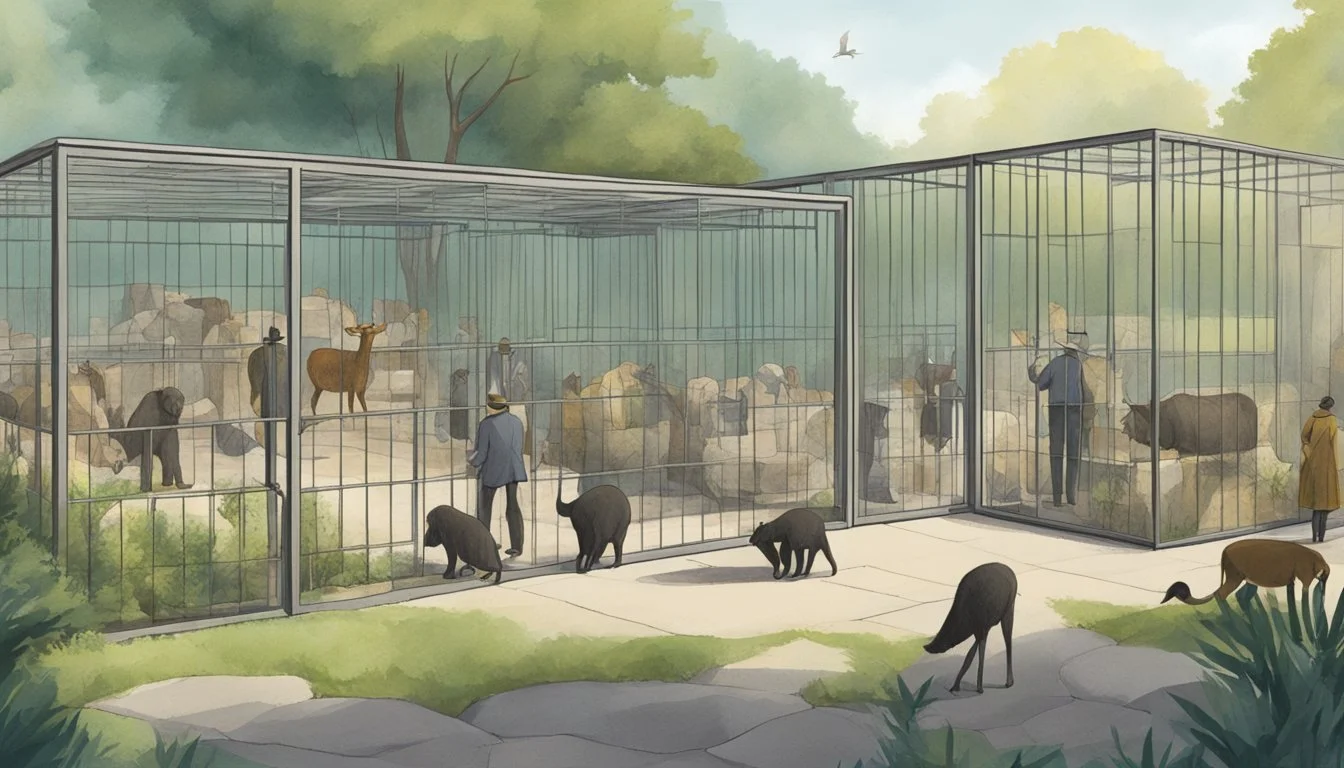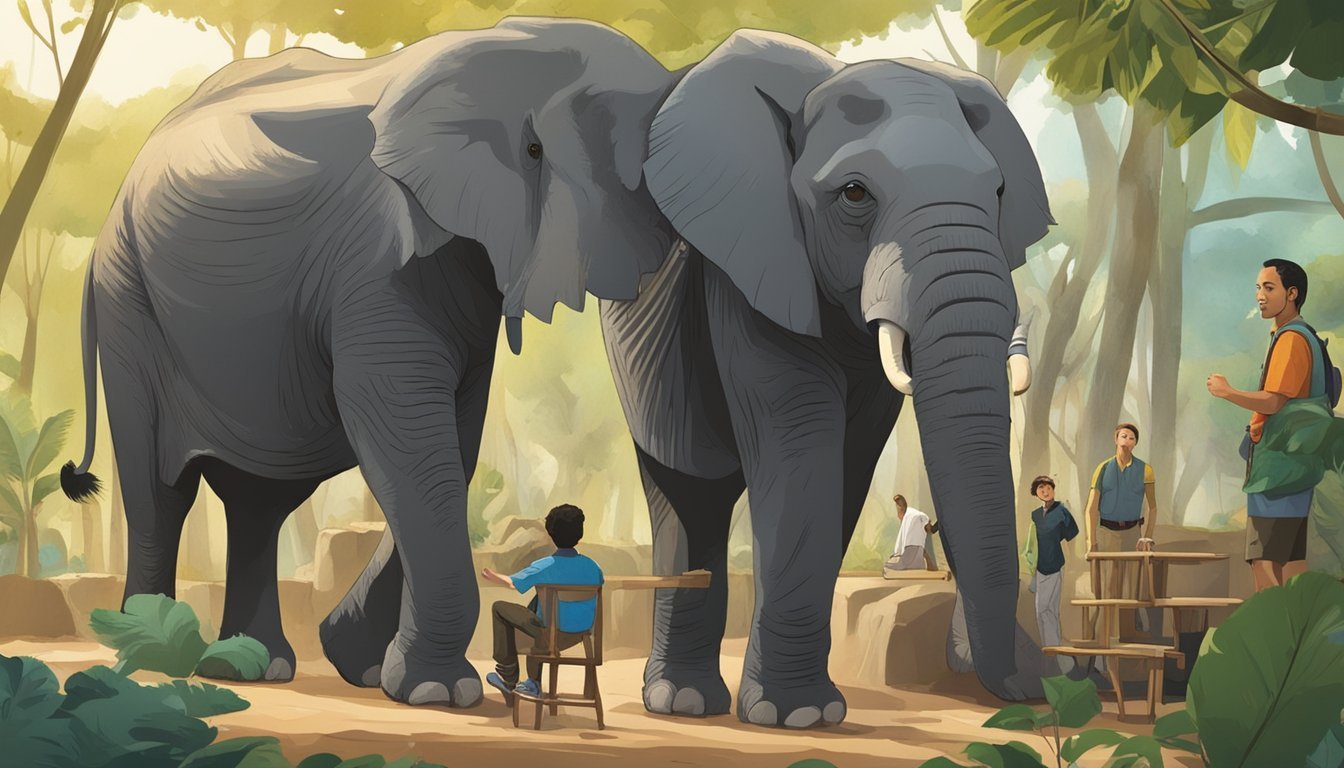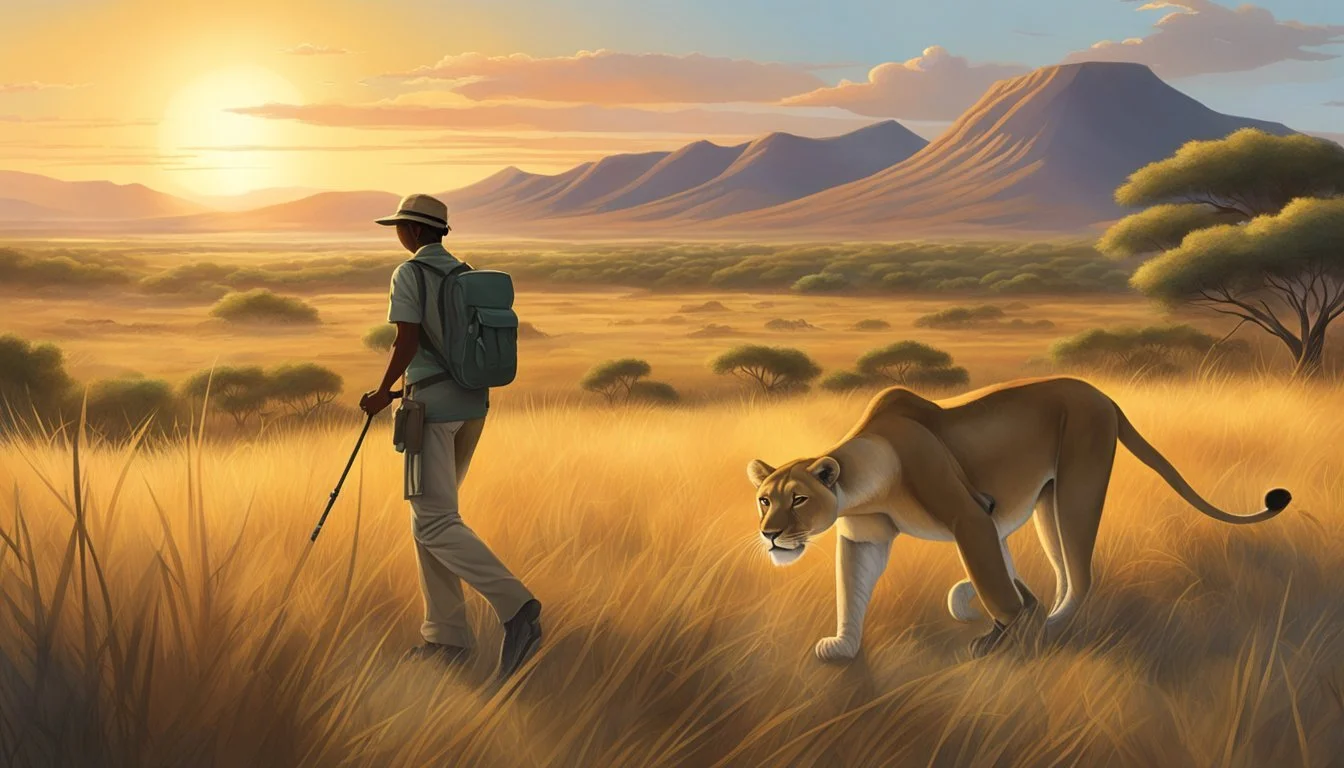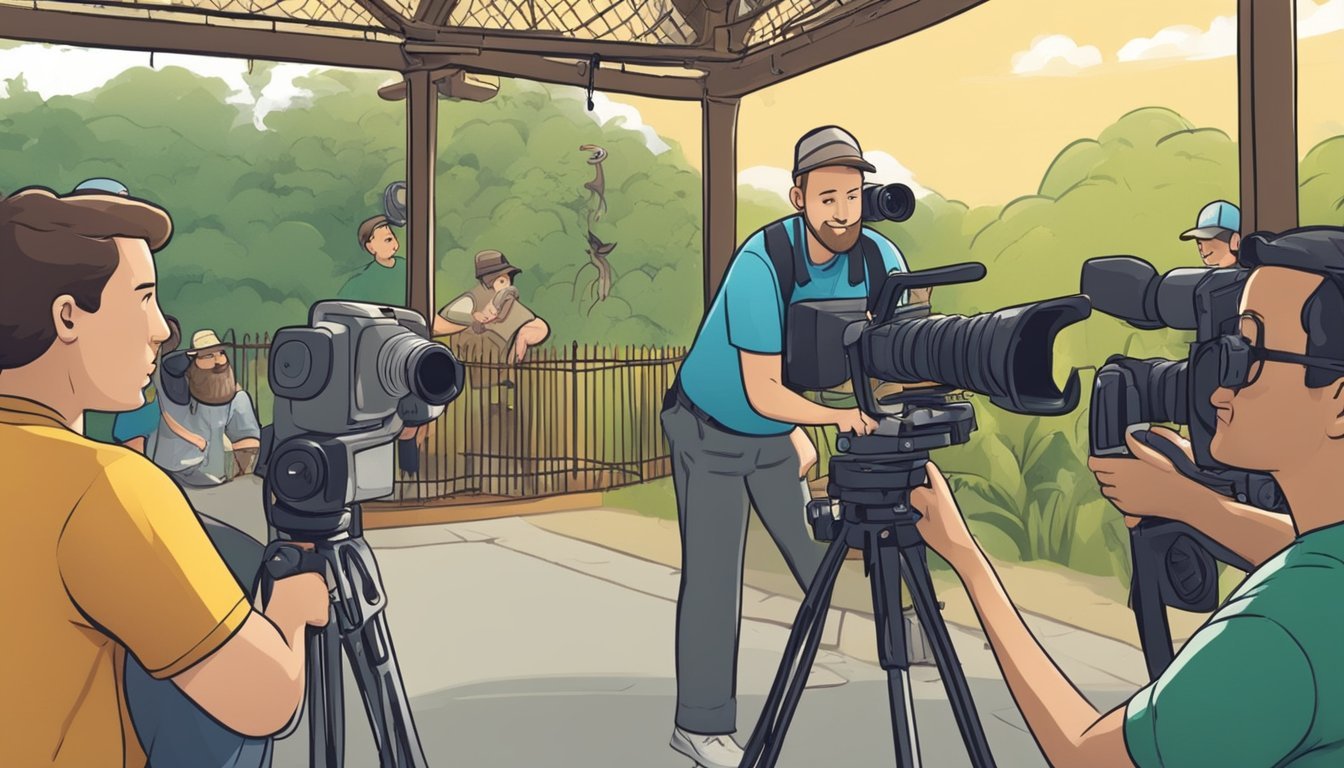Shocking Secrets Exposed: Zoo Documentaries Reveal Nature's Hidden Truths!
Documentary films about zoos offer unique glimpses into the world of captive animals and the humans who care for them. These films explore the complex relationships between wildlife, conservation efforts, and public entertainment. Zoo documentaries provide viewers with intimate access to the daily lives of animals and zookeepers alike, revealing both the challenges and triumphs of modern zoological institutions.
One notable zoo documentary is "Zoo" (2007), which takes a different approach by examining a controversial incident involving a man and a horse at an animal preserve. This film delves into taboo subjects and raises ethical questions about human-animal interactions. Other zoo documentaries focus on more traditional aspects of zoo life, showcasing the care and dedication of staff members as they work to protect endangered species and educate the public.
From behind-the-scenes looks at animal care to explorations of conservation efforts, zoo documentaries capture the diverse experiences found within these living museums. They often highlight the importance of zoos in protecting biodiversity and fostering connections between humans and wildlife. These films serve as powerful tools for raising awareness about animal welfare and environmental issues.
Understanding Zoos
Zoos play a crucial role in wildlife conservation and education. They provide opportunities for the public to observe and learn about diverse animal species while contributing to important research and preservation efforts.
The Role of Zoos in Conservation
Zoos are at the forefront of protecting endangered species. They participate in breeding programs to maintain genetic diversity and support population recovery efforts. Many zoos collaborate on international conservation projects, working to preserve habitats and reintroduce animals to the wild.
Research conducted at zoos helps improve animal care practices and advances scientific knowledge. Zoos also raise awareness about environmental issues and inspire visitors to take action for wildlife protection.
Prominent Zoos and Their Impact
Chester Zoo in England is renowned for its conservation work, particularly with endangered species like black rhinos and Sumatran orangutans. The zoo leads over 80 conservation projects in 30 countries, making significant contributions to global wildlife preservation.
Columbus Zoo in Ohio, USA, is famous for its gorilla conservation efforts. The zoo's programs have successfully bred and raised numerous gorillas, contributing to the species' survival. It also supports field conservation projects worldwide, focusing on endangered species protection.
These institutions demonstrate how modern zoos go beyond animal displays, actively participating in global efforts to safeguard biodiversity and educate the public about wildlife conservation.
The Genre of Zoo Documentaries
Zoo documentaries offer viewers a unique glimpse into the lives of animals and the people who care for them. These films combine education, entertainment, and conservation messages.
Characteristics of Zoo Documentaries
Zoo documentaries typically feature behind-the-scenes footage of daily zoo operations. They often focus on animal behaviors, veterinary procedures, and conservation efforts. Filmmakers use specialized cameras to capture intimate moments without disturbing the animals.
These films frequently employ narration to provide context and explain complex concepts. Many zoo documentaries highlight the relationships between keepers and animals, showcasing the dedication of zoo staff.
Cinematography in zoo documentaries often includes close-up shots of animals, time-lapse sequences of exhibit construction, and aerial views of zoo grounds.
Influential Zoo Documentaries
"The Zoo" series, featuring the Bronx Zoo, has gained popularity for its in-depth look at zoo life. It explores various aspects of animal care and conservation programs.
"The Secret Life of the Zoo" offers viewers a glimpse into Chester Zoo in the UK. This series uses innovative filming techniques to reveal animal behaviors rarely seen by the public.
"Wild Thing: The Smithsonian National Zoo" showcases the important role zoos play in species preservation. It highlights breeding programs for endangered animals and efforts to reintroduce them to the wild.
These documentaries have helped shape public perception of modern zoos as conservation centers rather than mere entertainment venues.
Case Study: Zoo (2007)
"Zoo" explores the complex story of Kenneth Pinyan's death following a sexual encounter with a horse. The documentary sparked debates on ethics, sexuality, and the limits of human behavior.
The Filmmakers Behind 'Zoo'
Robinson Devor directed "Zoo" with Charles Mudede as writer and co-producer. The duo aimed to examine the incident without sensationalism. They used a mix of interviews and reenactments to tell the story.
Devor and Mudede approached the subject with sensitivity, focusing on the human elements rather than shock value. Their artistic choices included dreamlike visuals and atmospheric music to create a contemplative mood.
The film premiered at the 2007 Sundance Film Festival, gaining attention for its unique approach to a taboo subject. ThinkFilm later acquired distribution rights, bringing "Zoo" to a wider audience.
Controversies and Critical Reception
"Zoo" faced both praise and criticism for its unconventional treatment of bestiality. Some reviewers lauded its artistry and non-judgmental stance. Others found the subject matter too disturbing.
The film's aesthetic approach drew comparisons to art house cinema rather than typical documentaries. This style divided critics, with some praising its originality and others finding it pretentious.
"Zoo" screened at prestigious events like the Cannes Film Festival, elevating discussions about its artistic merit. However, its controversial topic led to heated debates about the ethics of portraying such acts on screen.
Cultural Impact and Public Discussion
The documentary brought the little-known practice of zoophilia into public discourse. It challenged viewers to confront uncomfortable questions about human sexuality and moral boundaries.
"Zoo" sparked conversations about consent, animal rights, and the limits of personal freedom. These discussions extended beyond film circles into broader social and legal debates.
The film's release led to increased scrutiny of Washington state laws regarding bestiality. It indirectly contributed to legislative changes aimed at preventing similar incidents.
"Zoo" remains a significant work in documentary filmmaking, demonstrating how cinema can address highly controversial subjects thoughtfully and artistically.
Exploring the Ethics of Human-Animal Relationships
Human-animal relationships raise complex ethical questions, particularly regarding sexual interactions. Legal systems and moral frameworks grapple with defining appropriate boundaries and protections.
The Concept of Zoophilia
Zoophilia refers to sexual attraction to animals. Some individuals develop emotional and physical attachments to animals beyond typical pet relationships. This can manifest as sexual desires or acts.
Zoophiles often distinguish their feelings from bestiality, which focuses solely on sexual acts. They may view their attractions as a sexual orientation.
Mental health experts debate whether zoophilia should be classified as a paraphilia or mental disorder. Some argue it stems from past trauma or loneliness.
Legal and Moral Perspectives
Most countries prohibit sexual acts with animals, classifying it as animal abuse. Laws aim to protect animals unable to consent.
Opponents argue zoophilia exploits and harms animals. Animal welfare groups push for stricter penalties.
Some zoophiles claim their relationships are consensual and loving. They push for acceptance similar to LGBTQ+ movements.
Ethicists debate concepts of consent between humans and animals. Questions arise about power dynamics and animals' capacity to agree.
Conservation efforts sometimes involve close human-animal bonds. This can blur relationship lines for some individuals.
Human-Animal Interactions in Documentary Film:
Title Year Key Topics Zoo 2007 Zoophilia, ethics Animal Passions 2004 Zoophilia debate
The Intersection of Zoology and Cinematography
Zoo documentaries blend scientific observation with artistic visual storytelling. Filmmakers use innovative cinematography techniques to capture animal behavior and zoo environments in compelling ways.
Visual Storytelling in Zoo Documentaries
Documentaries like "Inside the Zoo" employ stunning cinematography to bring viewers up close with zoo animals. Filmmakers use a variety of camera angles and movements to showcase animal personalities and behaviors.
Slow-motion footage reveals intricate details of animal movement. Time-lapse sequences demonstrate daily zoo routines and animal activity patterns. Underwater cameras capture aquatic habitats from the animals' perspective.
Carefully framed shots establish the broader zoo environment. Intimate close-ups highlight animal expressions and interactions. This visual approach creates an immersive experience for viewers.
The Role of Cinematography in Documenting Zoos
Cinematography plays a crucial role in educating audiences about zoo conservation efforts. Filmmakers use lighting and composition to emphasize the relationship between animals and their habitats.
Aerial shots showcase the scale of zoo enclosures. Tracking shots follow zookeepers as they care for animals. Low-angle perspectives put viewers at eye level with different species.
These techniques help convey scientific information in an engaging way. Cinematographers work closely with zoologists to accurately portray animal behaviors and habitats on screen.
Thoughtful editing and pacing create narrative arcs that keep viewers invested in the animals' stories. The result is a powerful blend of education and entertainment.
Support and Funding for Zoo Documentaries
Zoo documentaries often require significant financial backing to bring their stories to life. Filmmakers can explore various avenues to secure funding for these projects.
Foundation support is a key resource. Organizations dedicated to wildlife conservation or environmental causes may offer grants specifically for zoo-related documentaries.
Crowdfunding platforms provide another option. Filmmakers can leverage public interest in animals and conservation to attract individual donors passionate about these subjects.
Some zoos and aquariums have their own funding programs for educational content. These institutions may partner with documentarians to create films that showcase their work and residents.
Government agencies focused on wildlife or education sometimes offer grants for nature documentaries, including those set in zoos.
Film festivals and documentary-specific competitions can be sources of both funding and exposure. Winning entries often receive monetary prizes to support production costs.
Corporate sponsorships from companies aligned with conservation efforts or animal welfare can provide substantial financial support for zoo documentaries.
Fiscal sponsorship through organizations like the International Documentary Association can help filmmakers access grants reserved for non-profit entities.
By exploring these diverse funding options, documentarians can gather the resources needed to create compelling films about zoos and their inhabitants.






